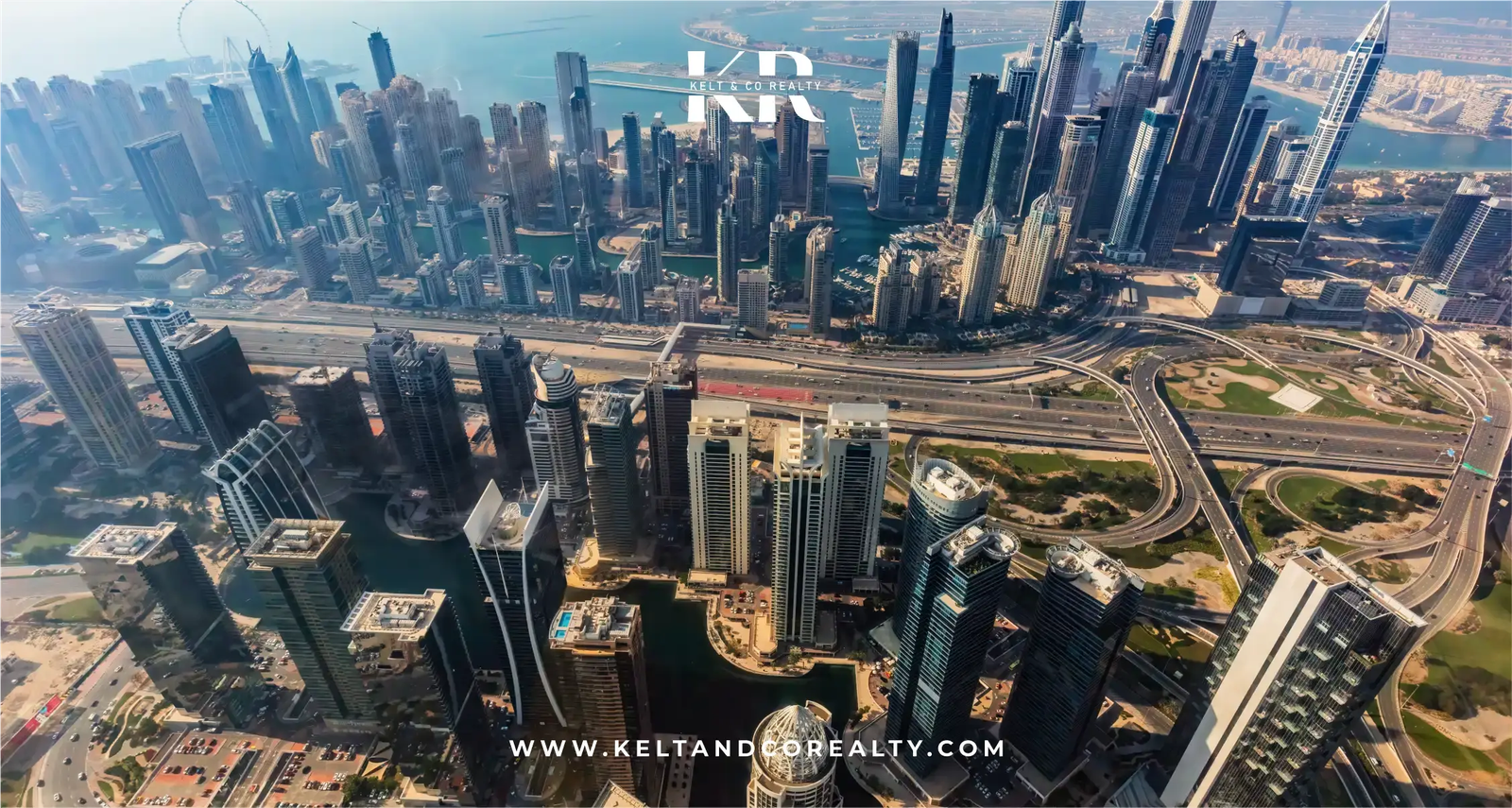Now Reading: Dubai Property Market News: New Regulations Favoring Global Investors
-
01
Dubai Property Market News: New Regulations Favoring Global Investors
Dubai Property Market News: New Regulations Favoring Global Investors
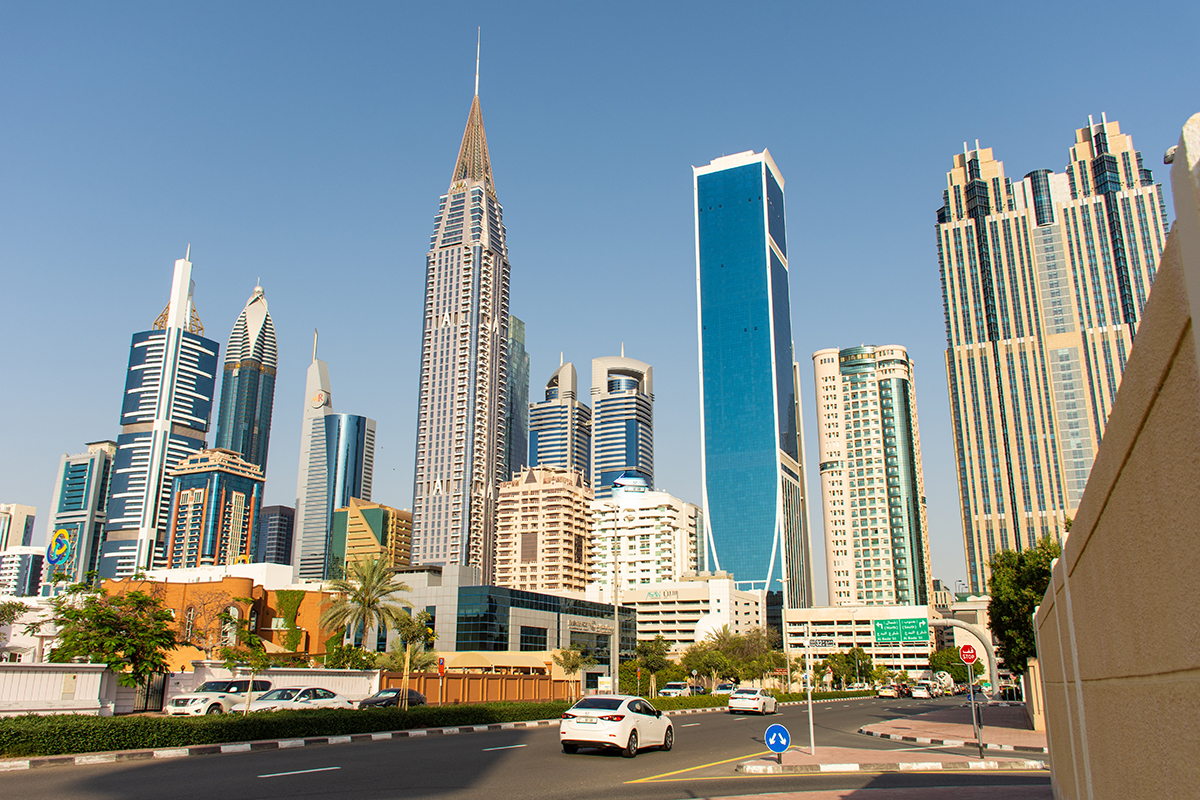
Table of Contents
Imagine stepping into your Dubai home, where a soft voice command lifts elegant blinds, revealing a golden sunrise over a shimmering lagoon or a lush community garden. Your coffee brews in a smart, eco-friendly kitchen, and wide windows frame a vibrant wellness plaza or a serene skyline view. You start your day with a yoga session in a nearby pavilion, feeling the energy of a city that’s rolling out the red carpet for global investors.
It’s August 2025, and Dubai’s property market is buzzing with new regulations that make it a global investment haven, with projects like Dubai Creek Harbour, Tilal Al Ghaf, and Palm Jumeirah leading the charge. With 96,000 transactions worth $87 billion in the first half, up 15% from 2024, and 55% of buyers from the UK, India, Russia, and China, Dubai is a magnet for wealth. Offering 100% freehold ownership, a dirham pegged to the U.S. dollar, and no personal income tax, capital gains tax, or annual property taxes, properties priced from $500,000 to $10 million deliver 5-7% rental yields and 7-10% price appreciation, outpacing London (2-4%) and New York (2-3%).
Properties over $545,000 qualify for a 10-year Golden Visa, while those at $204,000 grant 2-year residency. Fueled by 25 million tourists, a 4% population surge, and investor-friendly regulations, Dubai’s 2025 market is thriving. Understanding these new rules, fees, and VAT is your key to securing a radiant investment in this dynamic city.
New Tax Rules: A Game-Changer for Investors
Dubai’s 2025 tax regulations, including the Domestic Minimum Top-up Tax (DMTT) effective January 1, are tailored to favor individual investors. The DMTT imposes a 15% tax on multinationals with revenues over €750 million ($793 million), but individual investors are exempt, preserving 100% of their profits. A July 2025 policy allows depreciation deductions on fair market value, saving $1,818-$18,182 annually for a $1 million home revalued at $1.1 million.
Cabinet Decision No. 34 refines Qualifying Investment Fund (QIF) rules, exempting corporate tax if real estate income is below 10%. A QIF earning $2 million, with $200,000 from rentals, faces 9% tax ($16,200) on 90% ($1.8 million). Qualified Free Zone Person (QFZP) status in areas like DMCC avoids corporate tax and DMTT, saving $7,500-$75,000, with setup costs of $2,000-$5,000. These rules make Dubai a low-tax haven for global investors.
New tax rules feel like a puzzle unlocking prosperous investment solutions.
Golden Visa Enhancements: Boosting Investor Appeal
The Golden Visa program, a 2025 cornerstone, now offers streamlined 10-year residency for properties over $545,000, attracting buyers from the UK, India, and Russia. A $1 million Dubai Creek Harbour villa qualifies, providing family sponsorship and business setup perks. Properties at $204,000 offer 2-year residency, appealing to entry-level investors from China and India. A 2025 update simplifies renewals and lowers documentation requirements, boosting demand in projects like Tilal Al Ghaf. With 7-10% price growth and 85-95% occupancy, this program drives investment, unlike stricter residency rules elsewhere, making Dubai a global magnet.
The Golden Visa feels like a golden key to a radiant future.
Dubai Creek Harbour: Waterfront Investment Haven
Emaar’s Dubai Creek Harbour, 10 minutes from Downtown Dubai, is a 2025 standout with waterfront apartments and villas featuring smart automation and cultural plazas. Priced at $500,000-$5 million, these properties yield $25,000-$350,000 annually, tax-free, saving $9,250-$157,500 compared to the U.S. (37%) or UK (45%). Selling a $1 million home for $1.1 million (10% appreciation) nets a $100,000 tax-free profit, saving $20,000-$28,000 versus London (20-28%) or New York (20-37%). No property taxes save $5,000-$50,000 yearly, and VAT exemptions save $25,000-$250,000. With 85-90% occupancy and 7-10% price growth, QFZP status saves $4,500-$31,500. U.S. investors deduct depreciation ($9,091-$45,455), saving up to $15,909. This project attracts GCC and European buyers, thriving under new regulations.
Dubai Creek Harbour feels like a radiant, waterfront sanctuary for wealth.
Tilal Al Ghaf: Smart Wellness Investment Gem
Majid Al Futtaim’s Tilal Al Ghaf, 20 minutes from Dubai Marina, unveils a 2025 phase of smart villas with AI-driven climate control and wellness hubs. Priced at $500,000-$5 million, these properties yield $25,000-$350,000 annually, tax-free, saving $9,250-$157,500. Short-term rentals, boosted by 25 million tourists, require a DTCM license ($408-$816), increasing yields by 10-15% ($2,500-$52,500). Long-term leases need Ejari registration ($54-$136), with fines up to $13,612 for non-compliance. A 2025 regulation simplifies DTCM licensing, reducing processing times. With 85-90% occupancy and 7-10% price growth, QFZP status saves $4,500-$31,500. U.S. investors deduct depreciation ($9,091-$45,455), saving up to $15,909. Indian and Russian buyers flock to this tech-wellness hub, fueled by investor-friendly rules.
Tilal Al Ghaf feels like a vibrant, smart oasis for thriving investments.
Palm Jumeirah: Luxury Investment Icon
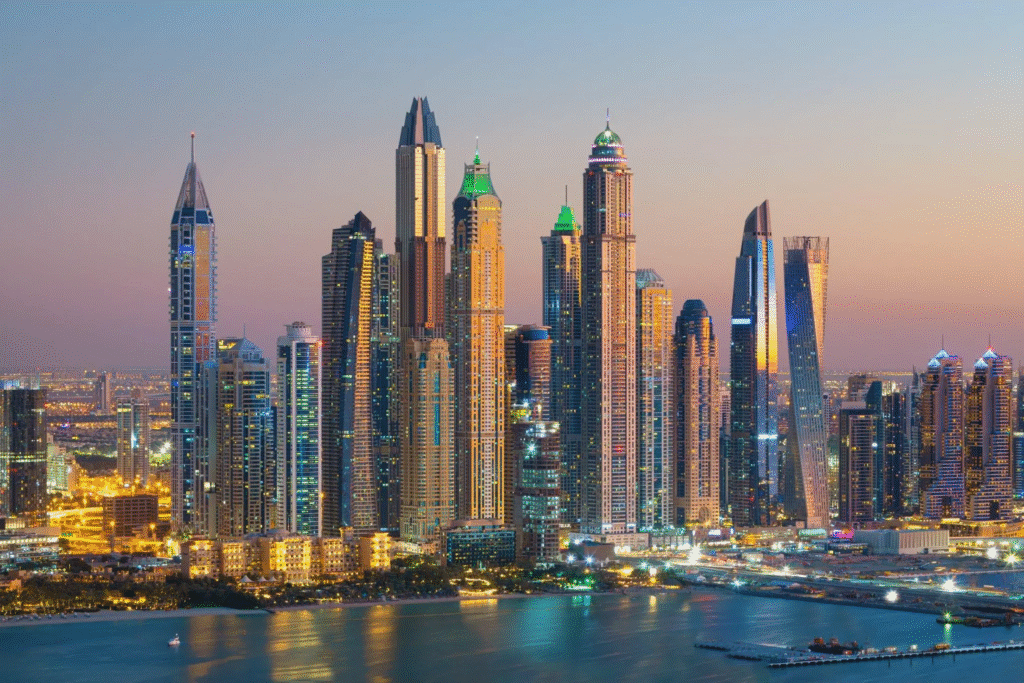
Nakheel’s Palm Jumeirah remains a 2025 luxury leader with beachfront villas and penthouses featuring private infinity pools and exclusive beach clubs. Priced at $2 million-$10 million, these properties yield $100,000-$500,000 annually, tax-free, saving $37,000-$225,000. Selling a $5 million villa for $5.5 million yields a $500,000 tax-free profit, saving $100,000-$140,000. No property taxes save $20,000-$100,000 yearly, and VAT exemptions save $100,000-$500,000. Maintenance fees ($10,000-$50,000) cover elite amenities, with a 5% municipality fee ($5,000-$25,000). A 2025 rule streamlines maintenance fee disclosures, enhancing transparency. With 90-95% occupancy, QFZP status saves $22,500-$45,000. U.S. investors deduct depreciation ($45,455-$90,909), saving up to $31,818. Russian and European buyers drive demand, bolstered by new regulations.
Palm Jumeirah feels like a radiant, iconic oasis for elite wealth.
No Personal Income Tax: A Core Investment Driver
Dubai’s no personal income tax policy is a 2025 cornerstone, letting investors keep 100% of rental income. A $500,000 Dubai Creek Harbour apartment yields $25,000-$35,000, saving $9,250-$15,750; a $10 million Palm Jumeirah villa yields $400,000-$500,000, saving $180,000-$225,000. Short-term rentals require a DTCM license ($408-$816), boosting yields by 10-15%. Long-term leases need Ejari registration ($54-$136). A 5% municipality fee ($1,250-$25,000) applies, with fines up to $13,612 for non-compliance. A 2025 regulation digitizes Ejari, speeding up registration. High occupancy from luxury amenities ensures this tax advantage attracts global investors.
Tax-free rentals feel like a refreshing wave of financial prosperity.
Zero Capital Gains Tax: Preserving Investor Wealth
Zero capital gains tax drives 2025 investment, letting buyers keep 100% of sale profits. Selling a $1 million Tilal Al Ghaf home for $1.1 million yields a $100,000 tax-free profit, saving $20,000-$28,000. A $10 million Palm Jumeirah property sold for $11 million delivers a $1 million tax-free gain, saving $200,000-$280,000. With 7-10% price growth, these projects outperform global markets. A 4% DLD fee ($20,000-$400,000), often split, applies, but a 2025 rule allows DLD fee waivers for first-time buyers in select zones, saving $10,000-$200,000. Tax-free profits make Dubai a wealth-preserving hub.
Keeping every dirham feels like a radiant triumph of smart investing.
No Annual Property Taxes: Simplifying Returns
No annual property taxes save $5,000-$100,000 yearly on $500,000-$10 million properties, unlike London’s council tax ($3,000-$30,000) or New York’s property tax (1-2%). Maintenance fees ($5,000-$50,000) cover wellness hubs, smart security, and luxury amenities, with a 5% municipality fee ($1,250-$25,000) on rentals. A 2025 regulation caps municipality fees at 5%, ensuring cost predictability. High occupancy from prime features like waterfront trails ensures cost efficiency, attracting global investors to Dubai’s 2025 market.
No property taxes feel like a gentle breeze easing your investment journey.
VAT Rules: A Strategic Financial Edge
Residential purchases skip 5% VAT, saving $25,000-$500,000 on $500,000-$10 million properties. Off-plan purchases incur 5% VAT on developer fees ($2,500-$50,000), recoverable via FTA registration ($500-$1,000). A 2025 rule streamlines FTA registration, reducing costs to $300-$800. Short-term rental operators register for VAT if revenue exceeds $102,041, charging 5% but claiming credits on DTCM fees ($408-$816). A $500,000 home yielding $25,000-$35,000 incurs $1,250-$1,750 in VAT, with $400-$600 in credits. Non-compliance risks fines up to $13,612, so diligent record-keeping is key for 2025 investors.
VAT exemptions feel like a clever boost to your financial strategy.
DLD Fees and Title Deeds: Securing Investments
The 4% DLD fee, typically split, applies: $20,000 for a $500,000 home or $400,000 for a $10 million villa. A 2025 regulation allows DLD fee reductions to 0.125% for family gift transfers, saving $19,375-$387,500. Title deed issuance costs $136-$272, requiring DLD registration. Broker fees (2%, $10,000-$200,000) may be waived for off-plan projects. Mortgage registration (0.25% of loan, $1,250-$25,000) and valuation fees ($680-$1,360) apply for financed deals. The 2025 Oqood system enhances escrow compliance, ensuring secure investments for global buyers.
Title deeds feel like the key to your radiant, global wealth.
Corporate Tax: Navigating Investor-Friendly Rules
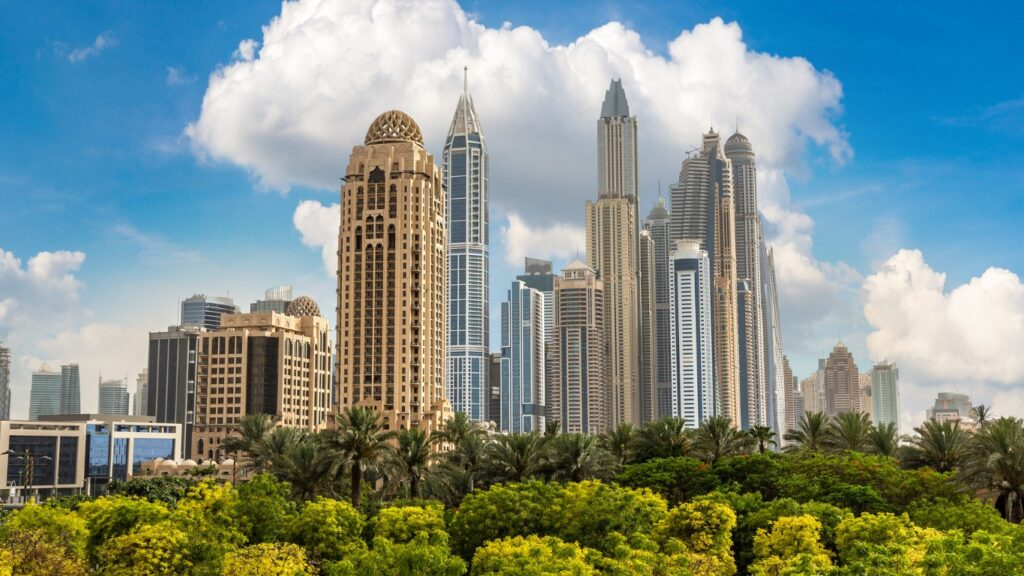
Introduced in 2023, the 9% corporate tax applies to profits over $102,110. A $10 million Palm Jumeirah villa yielding $400,000-$500,000 incurs $36,000-$45,000, reducing net income to $364,000-$455,000. QFZP status avoids this, saving $36,000-$45,000, with setup costs of $2,000-$5,000. A 2025 update simplifies QFZP applications, cutting processing times. Small business relief waives tax for revenues under $816,000 until December 31, 2026. Individual ownership skips this tax, ideal for most 2025 investors.
Corporate tax feels like a navigable ripple in your investment strategy.
Top Projects Thriving Under 2025 Regulations
1. Dubai Creek Harbour: Waterfront Investment Leader
Dubai Creek Harbour ($500,000-$5 million) offers 5-7% yields and 7-10% price growth, delivering a 7-10% ROI with cultural plazas. A $1 million home yields $50,000-$70,000 tax-free, saving $18,500-$31,500. Selling for $1.1 million yields a $100,000 tax-free profit. No property taxes save $5,000-$50,000, and VAT exemption saves $25,000-$250,000. Maintenance fees are $5,000-$25,000. QFZP saves $4,500-$6,300. U.S. investors deduct depreciation ($9,091-$45,455), saving up to $15,909.
Dubai Creek Harbour feels like a radiant, high-return masterpiece.
2. Tilal Al Ghaf: Smart Wellness Champion
Tilal Al Ghaf ($500,000-$5 million) offers 5-7% yields and 7-10% price growth, delivering a 7-10% ROI with mindfulness pavilions. A $1 million villa yields $50,000-$70,000 tax-free, saving $18,500-$31,500. Selling for $1.1 million yields a $100,000 tax-free profit. No property taxes save $5,000-$50,000, and VAT exemption saves $25,000-$250,000. Maintenance fees are $5,000-$25,000. QFZP saves $4,500-$6,300. U.S. investors deduct depreciation ($9,091-$45,455), saving up to $15,909.
Tilal Al Ghaf feels like a vibrant, innovative investment haven.
3. Palm Jumeirah: Luxury Investment Powerhouse
Palm Jumeirah ($2 million-$10 million) offers 5-7% yields and 7-10% price growth, delivering a 7-10% ROI with private pools. A $5 million villa yields $250,000-$350,000 tax-free, saving $92,500-$157,500. Selling for $5.5 million yields a $500,000 tax-free profit. No property taxes save $20,000-$100,000, and VAT exemption saves $100,000-$500,000. Maintenance fees are $10,000-$50,000. QFZP saves $22,500-$31,500. U.S. investors deduct depreciation ($45,455-$90,909), saving up to $31,818.
Palm Jumeirah feels like a radiant, global luxury oasis.
Why Regulations Favor Investors
Price Range: Dubai Creek Harbour ($500,000-$5 million) and Tilal Al Ghaf ($500,000-$5 million) suit mid-tier to affluent buyers; Palm Jumeirah ($2 million-$10 million) attracts ultra-high-net investors.
Rental Yields: 5-7%, with Palm Jumeirah and Tilal Al Ghaf at 5-7% for short-term rentals; Dubai Creek Harbour at 5-6% for stable leases.
Price Appreciation: 7-10%, driven by investor-friendly regulations and luxury trends.
Lifestyle: Smart systems, wellness hubs, and iconic designs boost demand.
Market Drivers: Golden Visas, tax exemptions, and streamlined regulations fuel growth.
ROI V
erdict: 7-10% ROI, blending lifestyle with strong financial rewards.
These regulations feel like radiant pillars of Dubai’s thriving market.
Strategies to Maximize 2025 Returns
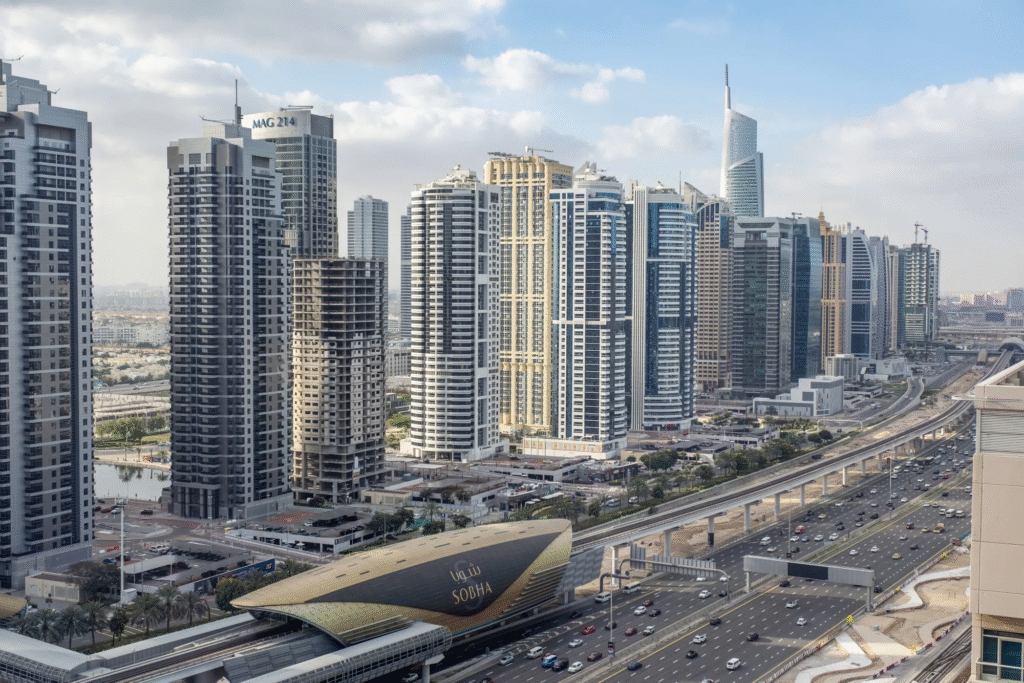
For individuals: Hold properties personally to avoid corporate taxes, saving $4,500-$45,000. Negotiate DLD fee splits, saving $10,000-$200,000. Use gift transfers to reduce DLD to 0.125%, saving $19,375-$387,500. Recover 5% VAT on developer fees via FTA registration ($300-$800). Leverage double taxation treaties with 130+ countries, saving $9,250-$225,000. U.S. investors deduct depreciation ($9,091-$90,909), saving up to $31,818. For corporates: Secure QFZP status, keep QIF income below 10%, and claim depreciation deductions. Hire property managers ($5,000-$50,000 annually) and tax professionals ($1,000-$3,000) to avoid fines up to $13,612.
These strategies feel like a roadmap to vibrant, global wealth.
Risks to Watch in 2025
A projected oversupply of 182,000 units by 2026 may slightly slow price growth in newer Tilal Al Ghaf phases, but Dubai Creek Harbour and Palm Jumeirah remain resilient. Off-plan delays risk setbacks, so choose trusted developers like Emaar or Nakheel and verify escrow compliance via the 2025 Oqood system. Non-compliance with VAT or DTCM rules risks fines up to $13,612, and corporate tax errors can cost $13,612. Indian investors must report properties in India’s Foreign Asset schedule to avoid $135,000 penalties. Currency fluctuations, though minimal with the dollar peg, could impact returns.
Why 2025 Regulations Empower Investors
With 7-10% ROI, 7-10% price growth, and tax-free savings of $5,000-$500,000 annually, Dubai’s top projects Dubai Creek Harbour, Tilal Al Ghaf, and Palm Jumeirah offer vibrant residences, innovative amenities, and unmatched financial rewards. New regulations like DMTT exemptions, streamlined Golden Visas, and simplified licensing make Dubai a global leader. Navigate fees, secure your radiant investment, and thrive in this dynamic, investor-friendly market.
read more: Dubai Real Estate Growth 2025: Key Drivers Investors Must Know



